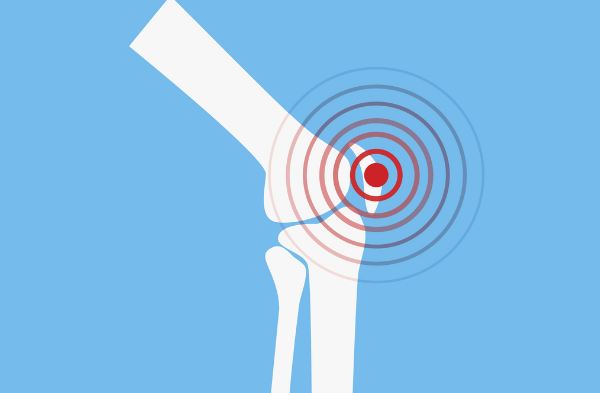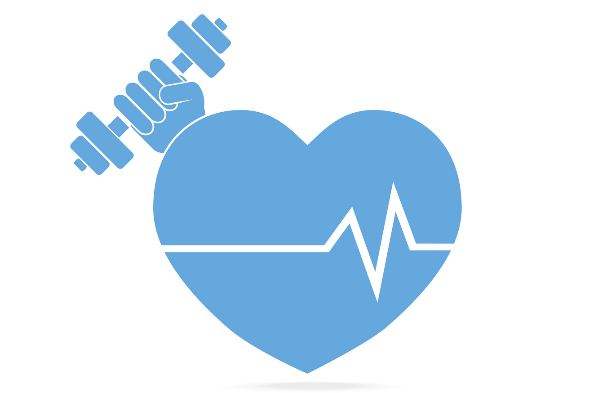Running vs. cycling

Running or cycling – which is better for you? It’s an old debate with no clear resolution. Each activity has its own benefits and shortfalls to consider and overall, both are brilliant workouts for increasing your endurance, improving your cardio and burning fat.
The exercise that you decide to stick with is up to you and doubtless your choice will be influenced by a variety of factors. Yet I think it’s still worthwhile taking a look at each sport and comparing their capabilities when it comes to the five main fields that preoccupy most fitness enthusiasts – burning fat, building endurance, ease on joints, strengthening muscles and cardio.
Which is better for increasing your endurance and stamina?

Endurance and stamina are essential when it comes to any exercise. The longer you can keep going without risking injury, the more you will elevate your heart rate, strengthen your muscles and burn fat.
Cycling and running both rely on building up a certain amount of endurance, which you can increase as you become more comfortable with the sport. In fact some runners try cycling to increase their endurance and vice-versa so it can be a bit difficult to discern which is more effective.
However, cycling is easier to maintain over long distances, with some perceiving the sport as sustained stamina training.1 Running is great for building endurance but it is difficult to sustain without damaging your muscles or joints.
The results: Both are incredible for improving you endurance but when it comes to which sport is better for increasing your stamina, cycling takes the win as you can sustain cycling for longer than you would be able to running.
The winner: Cycling
1http://www.menshealth.co.uk/fitness/cardio-exercise/cycling-vs-running-101487
Which is gentler on your joints?

This is a fairly easy question to answer. Running is a great form of exercise but it does have its drawbacks when it comes to its overall impact on your muscles and joints.
Every time your foot hits the ground, it has a clear effect on your joints, which have to bear the brunt of the impact – sometimes this can be up to 6 times your body’s weight!2 Normally your joints can bear this weight efficiently, but if you are running for prolonged periods of time or overestimate your thresholds, then you will be making yourself vulnerable to injury.
Runner’s knee, sometimes known as patellofemoral pain syndrome, is also a common sporting problem that can occur if you try to run too fast over a long distance. It’s estimated that up to 1 in 4 runners will develop this condition, characterised by knee pain whenever you try to bend your knees.3
Cycling, on the other hand, is low impact. Of course it carries the same risks that most exercises do – doing too much, too soon will take a toll. However, your joints and muscles are not placed under the same amount of pressure, which is one of the reasons why cyclists can maintain their stamina for far longer than runners.
The results: Cycling is miles ahead of running when it comes to its impact on your muscles and joints. Running is great for improving your fitness but it does leave more risk for developing injuries and damaging your joints.
The Winner: Cycling
2http://www.runnersworld.com/injury-treatment/osteoarthritis-in-runners
3http://www.everydayhealth.com/knee-pain/runners-knee.aspx
Which is better for improving your cardio?

Both cycling and running are celebrated for being outstanding when it comes to improving and maintaining your cardio. Individually each exercise is more than capable of elevating your heartbeat and working your lungs, but which ultimately manages to achieve a higher bmp per minute that can be obtained for longer?
First let’s take a look at your bpm. Your bpm refers to how many times your heart beats in a minute. This can depend upon a variety of factors ranging from your age to your environment (if you are running or cycling uphill, your heart will be beating considerably faster) so trying to determine an average can be tricky.
It isn’t a precise method, but generally, if you subtract your age from 220 bpm that should determine your maximum heart rate. So if you are 30, your maximum bpm should be around 190.4 When you are working out, your heart rate should be somewhere between 65%-70% of your maximum bpm.5
According to one source, the average heartbeat per minute for a 30 year old cyclist should be somewhere between 95-133 bpm if you are cycling moderately. If you are really pedalling, that figure can climb to between 133-162 bpm.6
This is respectable but how does it compare to running? Well according to a study conducted by Harvard Health, your bpm while cycling tends to be lower than that when running by about 6-10 beats.7
Results: So running manages to produce the higher bpm, providing a better cardio workout than cycling. However it’s important to remember that this bpm cannot be sustained for long, whereas with cycling you can maintain your bpm for longer periods of time.
Winner: Running
4https://www.bhf.org.uk/-/media/files/publications/medical.../your-heart-rate-is23.pdf
5http://www.runnersworld.com/tag/heart-rate
6http://livehealthy.chron.com/average-heart-rate-cycling-6689.html
7http://www.health.harvard.edu/newsletter_article/getting-back-on-the-bike
Which is better for strengthening your muscles?

Neither running nor cycling are traditionally associated with building muscle mass although both strengthen similar muscles within the body. Cycling focuses on the gluteal muscles, the quads and the hamstrings while running concentrates of all of these in addition to the abs and calves.
However, arguably cycling wins when it comes to strengthening these muscles and this in part comes down to stamina and impact. Cycling as a form of exercise is easier to sustain than running – a professional cyclist can cover distances of over 60 miles a day whilst a Tour de France champion can cover over a 100!
Not even Usain Bolt could manage to maintain that kind of stamina over such a distance. Cycling is also low-impact, meaning it will not upset your joints in the same way that running can so you can continue to exercise those muscles for longer.
Result: Both cycling and running strengthen the same muscle groups, however cycling can exercise those muscles for longer whilst running cannot boast the same type of stamina and is more likely to place the athlete at risk of injury.
The winner: Cycling
Which is better for weight-loss?
 If you’re looking to lose weight and wondering which sport would be better, this is probably the part you’ve been waiting for.
If you’re looking to lose weight and wondering which sport would be better, this is probably the part you’ve been waiting for.
When it comes to burning fat both sports are up there and each has their own advantage, depending on your overall weight-loss goal.
Unlike running, which requires your joints to bear the brunt of your weight, cycling is low impact, so if you’re looking to lose quite a lot of weight, this form of exercise may be easier for you to sustain rather than running.
However, it is because running requires you to support your body’s weight that it is able to more effectively burn through calories. Depending on your overall fitness and weight, you can burn up to 472 calories running at 12 miles per hour. Incredible!
Nevertheless, it may take some time for you to build up this type of endurance so you must be prepared to work at it.
The results: Cycling is a great option for burning calories if you are looking to lose a lot of weight or if you suffer from joint related problems. However, running steals the show when it comes to losing fat, although it may take time to increase your endurance.
The winner: Running
The results

Well out of the five given areas it seems as though cycling has done the best, outperforming running when it comes to stamina, strengthening the muscles and ease on the joints.
However, it is worth noting that strictly speaking neither exercise is really better than the other.
Referring back to the point I made earlier – a lot of professional cyclists are advised to take up running and vice- versa! Each exercise has attributes that can be easily transferred to the other, making cycling and running a good cross-training experience no matter which exercise you decide to stick to in the long-run.
No matter whether you’re a diehard cyclist or a running fanatic, it’s important to keep an eye on your regime. Injuries can occur in both sports, especially if you attempt to push yourself too hard and end up overstressing your body.
Re member that it’s important to look after yourself off-track as well so make sure you’re eating a good varied diet that’s full of fresh fruit and veg as well as lean protein and complex carbohydrates. Drink plenty of water and if you do wind up feeling a little worse for wear after a day on your bike or a 10K run, try using our Atrogel® Arnica Gel.
member that it’s important to look after yourself off-track as well so make sure you’re eating a good varied diet that’s full of fresh fruit and veg as well as lean protein and complex carbohydrates. Drink plenty of water and if you do wind up feeling a little worse for wear after a day on your bike or a 10K run, try using our Atrogel® Arnica Gel.
Our Atrogel is prepared using extracts of fresh arnica flowers and is outstanding when it comes to soothing muscle pains and stiffness. Naturally cooling, simply apply this non-greasy formula to the affected area for quick relief. Suitable for using alongside other medications and 100% child-friendly!








